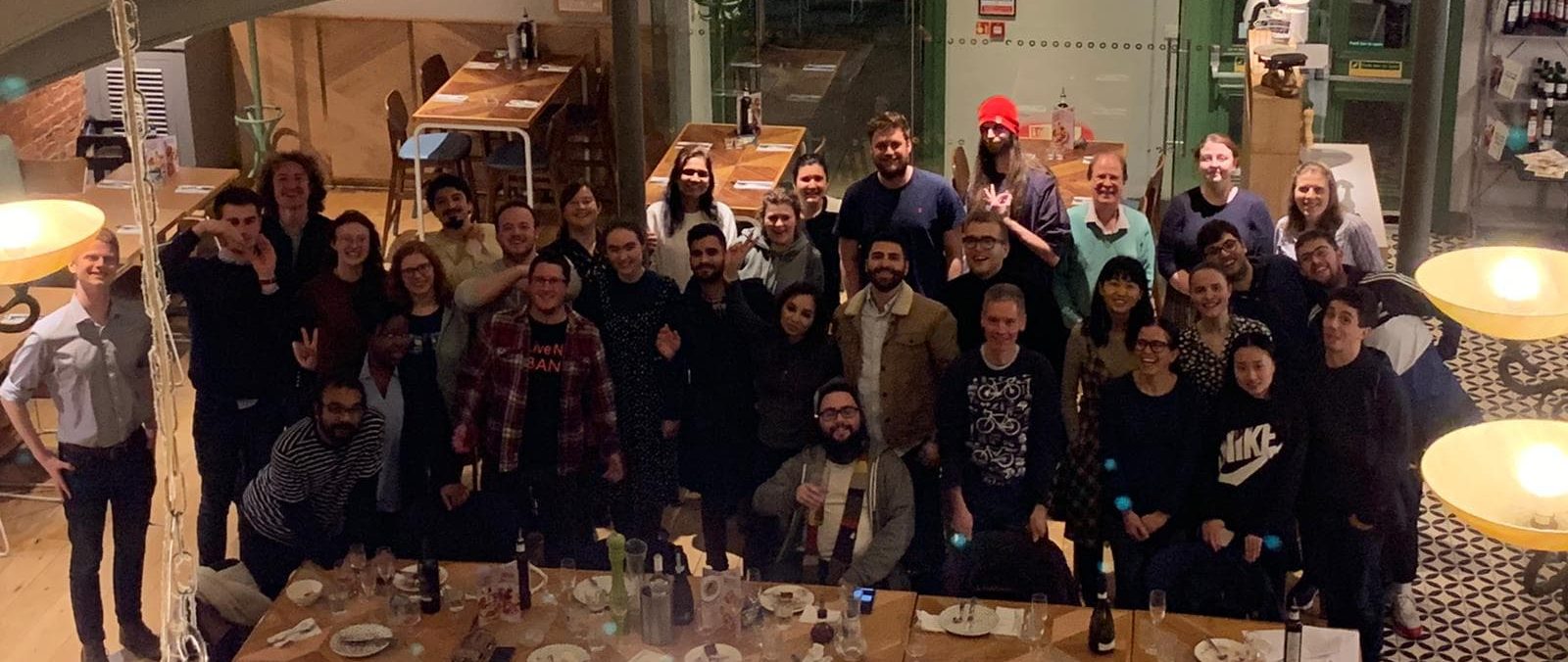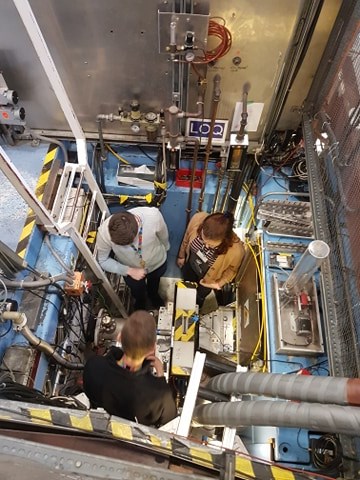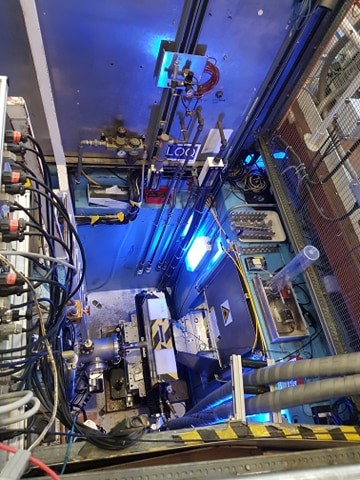Niamh Leaman, CSCT student in Cohort '19, is investigating how to use polysaccharides to improve the sustainability of home and care products. She is part of the Edler Research Group and her industrial partner is Unilever.
In March 2020, Niamh had the opportunity to attend a 10-day training course at ISIS, a neutron and muon source based at the STFC Rutherford Appleton Laboratory, Oxfordshire. During this course, Niamh and other researchers were to learn how we could use neutrons in their work.
 What are neutrons and why are they useful?
What are neutrons and why are they useful?
Neutrons are subatomic particles with no charge, which means they can be used to study molecular and atomic structures without damaging the samples.
When we fire neutrons at a sample, they interact with the atoms in the sample and are scattered. The specific way in which this scattering happens can provide a lot of information on the nature and structure of our sample.
How does an accelerator neutron source work?
ISIS is an accelerator neutron source. To create the neutrons that will let us study the structure of materials, a proton beam is fired from the accelerator into a metal target made of tungsten. This induces a reaction that generates neutron beams. By placing study samples in the neutron beams and using detectors to record how neutrons are scattered, we can visualise the shape and size of molecules and understand how these structures may behave.
Why will I be using neutrons?
In my PhD project, I’m investigating more sustainable alternatives to ‘rheology modifiers’, which are polymers that thicken or add viscosity in paints or cosmetics. In particular, I’m trying to find out how we can use polysaccharides - polymers made naturally by plants or bacteria – to replace polymers made from petrochemicals in home and personal care products.
However, in order to use polysaccharides in real products, we first need to understand how they would behave in those products – and that’s where neutrons come in. Small angle neutron scattering (SANS) is a technique used to work out the size and shape of structures formed between polysaccharides and other ingredients. From this, we can figure out the best ways to use polysaccharides in real products.
How have neutrons been used for sustainable science?
CSCT students are no strangers to neutron scattering in their research! Neutron diffraction has been used by graduates of the CSCT to figure out the structure of designer green solvents that are biodegradable and biocompatible or non-toxic. To replace traditional solvents with green solvents, it’s essential that we first understand their structure and predict how they will behave.
Neutrons have also been used to make greener detergents. Detergents contain surfactants – molecules that bind to dirt, which make the detergents able to clean. These molecules are normally made from petrochemicals. Instead, surfactants could be made from a more sustainable source, like beer! Graduates of the CSCT used neutrons to investigate the structure and interactions of surfactants made from the waste products of the brewing industry. From this, they could determine what products these waste-derived surfactants could be used for.
Course highlights (and lowlights)
It started with a poster session – the first poster I presented in my PhD! – where I got to meet a lot of other early-stage researchers and learn about their work.
The opportunity to run a SANS experiment on the ISIS LOQ instrument was the best day of the course. Being able to see the scale of the kit after studying it was invaluable. I could prep and load samples in “the pit” and was able to open the neutron beam to run our practise experiment.
Unfortunately, the course had to end early as ISIS shut down due to the first lockdown in March, but I’m looking forward to going back to run some neutron experiments! In the meantime, I’ve been doing lots of scattering experiments with X-rays instead at Bath.
Respond





